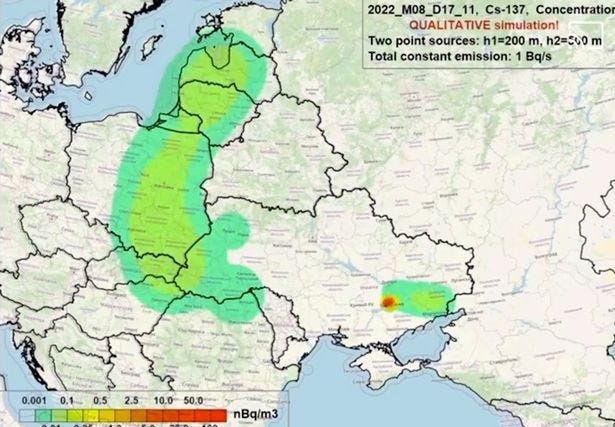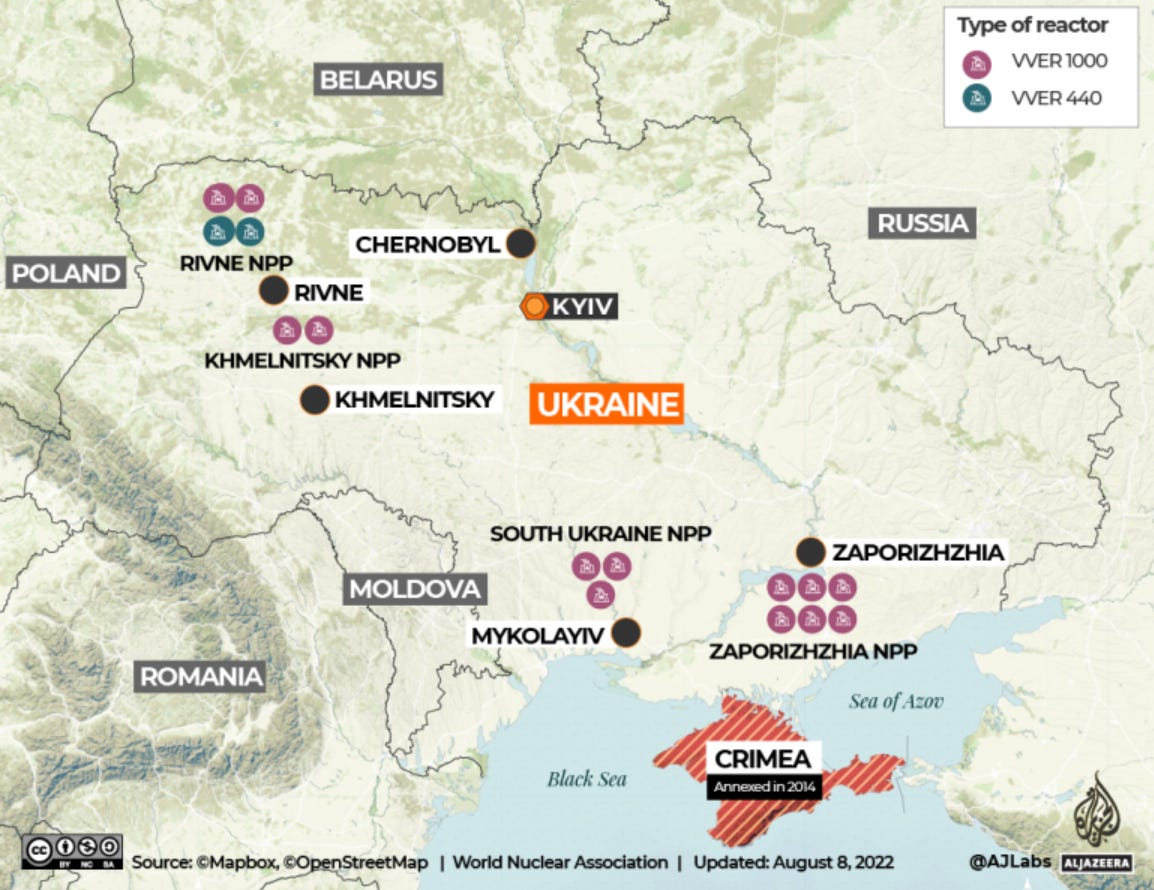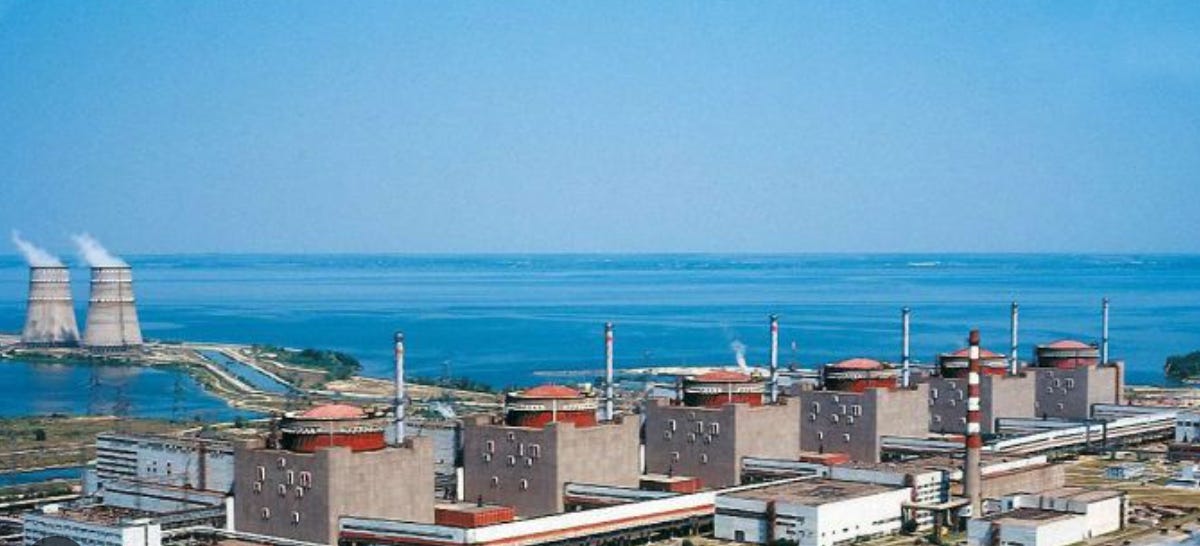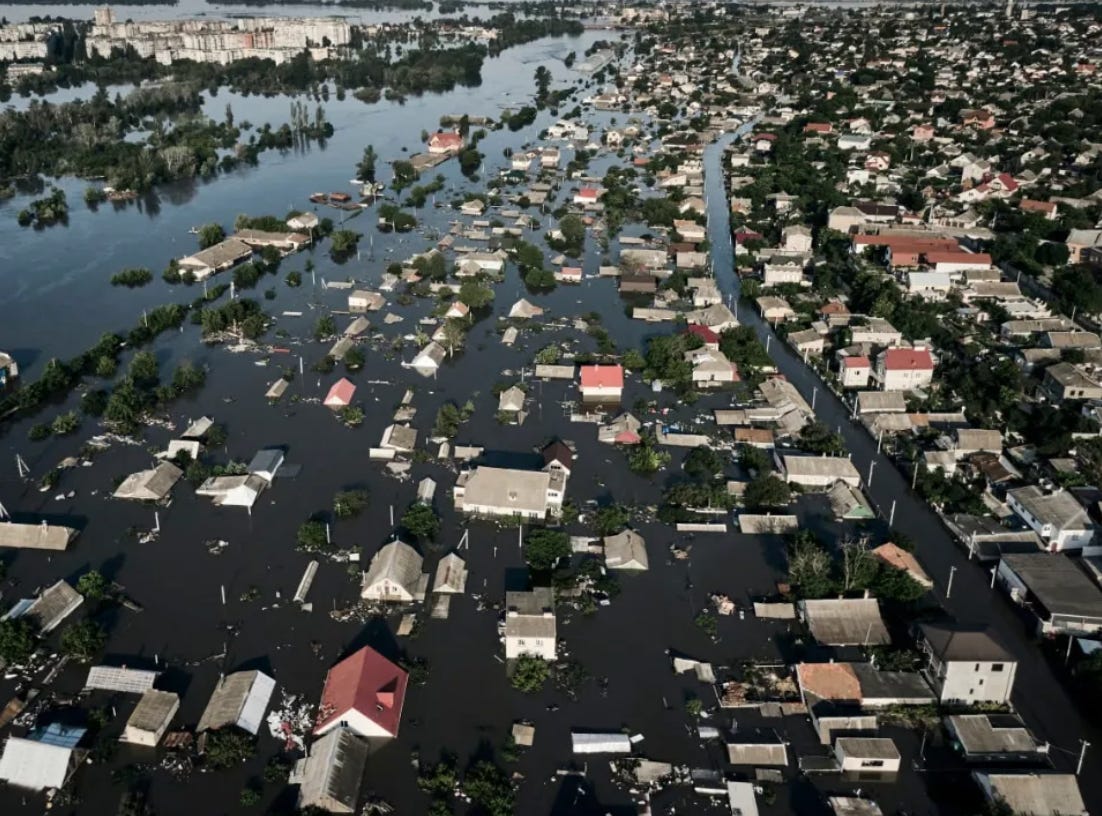Vladimir Putin’s annual St. Petersburg International Economic Forum was as much of a flop as is Russia’s “special military operation” or its economy. The gathering was boycotted by major political and business leaders, and participants were told to bring cash because foreign bank cards no longer work in Russia. The foreign press was banned but this did not stop Putin from ranting for 90 minutes about how well his war and economy were doing and hinting again that Russia might “theoretically” use nuclear weapons. And last week Ukraine’s President Volodymyr Zelensky warned that Putin intends to blow up Ukraine’s largest nuclear plant to thwart Kyiv’s counteroffensive. When asked to respond to this possibility, Secretary of State Anthony Blinken said “we’ll continue to monitor the situation very closely and we don’t see any indications that Russia is preparing the use of nuclear weapons”. But he missed the mark. An occupied nuclear plant that is blown up becomes a nuclear weapon.

The fallout caused by such a bombing would be massive. As shown in the video, a radioactive cloud would spread across many countries - from Russia in the east to Poland in the west - over a 72-hour period. Ukraine, Belarus, Moldova, Lithuania, Latvia, Estonia, Poland, Romania, Serbia, Hungary, Slovakia, Czech Republic, and Russia would all be affected.
Obviously, cool heads must prevail in the West and nuclear threats have been made by Putin and others throughout the war. But the stakes are too high to simply monitor the situation “closely” or to ignore that a nuclear power plant is a bomb waiting to be detonated. Besides that, a similar warning was issued in October 2022 by Zelensky that Russia intended to blow up a dam to flood a vast part of southern Ukraine. He urged the West to warn Russia against doing so, but nothing was said, and last week the dam was destroyed, poisoning the country’s most important watershed and flooding an area the size of Bahrain. That is why Zelensky’s warning about this nuclear plant must be heeded and international security measures taken immediately to protect the plant and other. Also of concern is that Russia has moved some tactical nuclear weapons to Belarus this week in contravention of the 1968 Nuclear Non-Proliferation Treaty signed by Moscow and all nuclear powers.
“I absolutely believe that moving weapons to Belarus demands an unequivocal response from NATO,” said Polish President Andrzej Duda last week before meeting with French President Emmanuel Macron and German Chancellor Olaf Scholz. It was eventually deemed “dangerous and irresponsible” by a NATO spokesman.
Placing nukes in Belarus drew a response from Chinese officials who renewed calls for de-escalation and reminded Russia that its leaders, and China’s, had reaffirmed their opposition to nuclear war at their March summit in Moscow as well as in 2022. “In January last year, the leaders of the five nuclear-weapon states issued a joint statement noting that a nuclear war cannot be won and must never be fought, and stressed that war between nuclear-weapon states should be avoided and strategic risks reduced," Mao Ning, China's foreign ministry spokesperson, said last week.
And, when asked, President Joe Biden called the transfer “totally irresponsible”.
Russia has occupied the plant for months and last summer allowed the International Atomic Energy Agency (IAEA) to monitor its operational safety remotely. But in April, its Director General warned of problems: “We are living on borrowed time when it comes to nuclear safety and security at the Zaporizhzhia Nuclear Power Plant. Unless we take action to protect the plant, our luck will sooner or later run out, with potentially severe consequences for human health and the environment.”
In April, the esteemed Scientists for Global Responsibility described potential hazards. “The worst possible scenario is a nuclear strike on a reactor. A direct strike by even the smallest nuclear warhead, for example, a 10 kilo-tonne (kT) ‘tactical’ nuclear warhead – smaller than that dropped on Hiroshima in World War II – would breach the core containment and spread the highly radioactive materials inside. A 10kT nuclear blast and fireball would create a 1km radius zone of major destruction, a crater 25m deep, and would carry radioactive materials into a cloud of 8km altitude and 3km across depositing them underneath and downwind as fallout. The reactor waste products contain long-lasting radioactive isotopes such as caesium and strontium which are readily absorbed into the body or into crops contaminating farmland. This would create a major radiation problem tens to hundreds of times’ worse and much longer-lasting than the nuclear weapon alone.”
The possibility of such a diabolical attack by Russia is not far-fetched, given how Russia has been purposely laying waste to Ukraine. It has planted landmines across an area the size of Switzerland, has displaced at least 11 million people, and destroyed apartment buildings, infrastructure, schools, hospitals, and housing. Last week, Russia blew up the country’s largest dam which will cause decades of environmental damage. But that calamity didn’t stop the counteroffensive, as Russia had hoped, which is why Ukraine’s President Volodymyr Zelensky warned that a “desperate” Putin intends to blow up the nuclear power plant downriver. “They constantly need destabilization here, and they want the world to put pressure on Ukraine to stop this conflict,” he said.
Ukraine’s security chief Oleksiy Danilov believes that Putin has launched “a fundamentally new stage of Russian aggression” and that since he “had the hydroelectric power plant blown up on his demand, he's ready to do anything.” The rhetoric coming out of Moscow also ratchets up. On June 14, Russia’s propaganda vehicle RT published a screed by a former Putin advisor named Sergey Karaganov who wrote: “By using its nuclear weapons, Russia could save humanity from a global catastrophe. A tough but necessary decision would likely force the West to back off, enabling an earlier end to the Ukraine crisis and preventing it from expanding to other states”.
Interestingly, Putin advisor, Alexander Dugin (whose daughter died in a car bombing intended to kill him) condemned Karaganov’s suggestion as “irresponsible”. He told journalists at Putin’s Economic Forum "I believe that we are far from having exhausted all the possibilities of victory without the use of nuclear weapons."
Others, such as former Russian diplomat Boris Bondarev, who resigned after last year’s invasion, believe that Putin’s nuclear threats are a bluff. "Today [Putin is] bluffing and we know that he has bluffed about nuclear threats. Ukrainians recovered some parts of their territory, and there was no nuclear retaliation," Bondarev told Newsweek. "If you're afraid of Putin using nukes, then you already lose the war against him and he wins."
The difference is that Putin has already turned a hydroelectric dam into a weapon of mass destruction. He has just crossed a nuclear red line by putting nukes in Belarus in contravention of the non-proliferation treaty. And now he holds Europe hostage by occupying Ukraine’s gigantic nuclear plant which is one missile strike away from becoming the world’s first “dirty bomb”. In response, the West must escalate its support for Ukraine militarily, diplomatically, and economically. Ukraine needs an air force and long-range weaponry. International watchdogs must occupy these plants. And strong pressure must be placed on China and India by their trading partners to issue bold, public condemnations against Putin’s nuclear gambit. Nukes in Belarus and Russia’s occupation of any nuclear plant are unacceptable.






Put simply - the West (Nato, Europe) have acted too late to make Putin pull back. The warning that Putin would destroy the dam by Pres Zelenskyy was ignored indicates that the West has allowed RU to dictate the war leaving death and destruction in UKR without the kind of 'alarm' needed. If Putin is NOT stopped - UKR will be mowed down. I can't understand the 'fear' factor the West has allowing this war to go on with NO retaliation allowed within Russia.
What a pathetically bleak world picture painted here of someone who “could” choose to empower vs. overpower the people of not only his county but those all around him.
A dark insecurity lurks in his mind so tormented that he just can’t let life flourish. He must see the world as his sandbox and wants to hold onto every grain. He’s on a roll like a steam roller with gravity on his side.